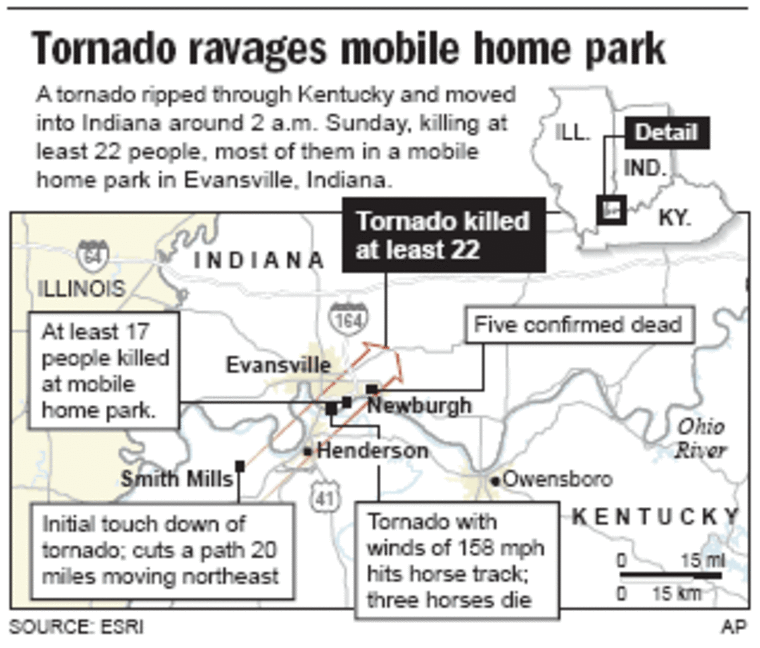The scienceof predicting tornadoes is one of the toughest calls in meteorology. Officials have just minutesto warn where a twister — traveling 40 mph — is headed next.
But in Norman, Okla., storm trackers at the National Oceanic and Atmospheric Administration's severe weather center are catching up, adding more than 100 Doppler radars in high-risk and other areas. The technology helps increase the lead time between a warning and a tornado from five minutes to nearly 20 minutes. According to one study, those radars have also cutthe number of expected fatalities by 45 percent.
"We have not had a 100-fatality tornado since the early and mid '70s," says NOAA warning coordination meteorologist Dan McCarthy. "That is really significant."
The hard part is what happens afterthe weather service issues a warning. Local officials are responsible for sounding their own sirens — and that cantake time.

In Evansville on Sunday, the weather service warned at 1:43 a.m., more than 30 minutes before the tornado hit at 2:15. But at that hour, many people — already asleep — may have never had a chance.
"I'm not sure what else you could do at 2 o'clock in the morning other than have your own personal weather radio that you can program that's gonna wake you up," says chief Dale Naylor with the Knight Township Volunteer Fire Department.
That's what more and more weather experts recommend. Weather radios are easy to find and cost about $50.
"That has a shrilling alarm sound, so you know exactly what it is," says McCarthy.
It's all aimed at giving you time to put as many wallsbetween you and the storm as possible and take advantage of warningsthat are improving all the time.